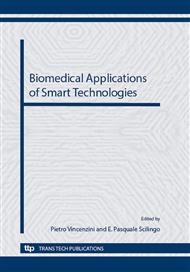p.51
p.59
p.63
p.70
p.75
p.81
p.86
p.92
p.102
Hepatocyte-Specific Gene Delivery with Galactose-Bearing Cationic Polymers with Different Molecular Structures
Abstract:
Since the promising virus -based gene therapies are often limited by problems such as the immunity of virus itself, the development of an efficient non-viral vector is of prime importance. For this reason, several synthetic nonviral polymeric carriers including cationic sequences have been molecularly designed. It is well known that the polymeric carriers with some cationic groups buffer the endosomal pH resulting in the enhanced transfection efficiency, but also in a relatively high toxicity. In the last decades, the polymers bearing pendant carbohydrates (glycopolymers) was proved to have relatively less toxic. Since the glycopolymers may not only decrease the toxicity of the cationic chain but also serve as targeting agent, we have rationally designed new glycopolymer-based gene delivery carriers. The interaction of carrier/gene polyplexes with hepatocytes and their intracellular trafficking were investigated in vitro. Our results show the significant efficacy of the galactose moieties on the uptake by hepatocytes, in a ligand specific manner.
Info:
Periodical:
Pages:
86-91
Citation:
Online since:
September 2012
Keywords:
Price:
Сopyright:
© 2013 Trans Tech Publications Ltd. All Rights Reserved
Share:
Citation:


